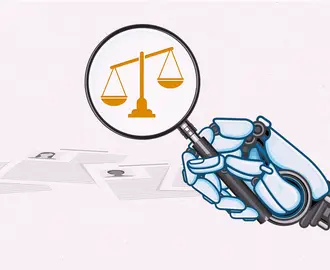Credit: IR Stone / Shutterstock
What you’ll learn:
Data center flexibility — the ability to shift workloads to different times of day when renewable energy generation is high or prices are low — is one way to address rising energy consumption. A new study finds that flexibility always reduces costs. But the environmental effects depend on the local grid, with flexibility sometimes even increasing emissions.
Data centers in the U.S. consumed about 4.4% of all domestic electricity in 2023. The Department of Energy expects this number to rise to between 7% and 12% by 2030.
Much of this growth in data center electricity demand is being driven by artificial intelligence and cloud computing, according to a professor of applied economics at MIT Sloan. “These technologies are transformative, but they also put enormous stress on the grid,” he said. “That raises big questions about how we manage demand and whether our power systems can keep pace in ways that are both reliable and sustainable.”
With Juan Senga and Shen Wang, postdoctoral associates at the MIT Center for Energy and Environmental Policy Research, Knittel analyzed how operational flexibility within data centers affects costs and emissions. They found that the flexibility to shift workload to different times of day when renewable energy generation is high or prices are low always reduces costs. The environmental effects, however, depend on the generational mix of the local grid, with flexibility sometimes even increasing emissions.
Flexibility cuts costs but not necessarily emissions
The researchers ran a model that compared three regional energy grids — the Texas grid, the mid-Atlantic grid, and the Western Interconnection — which together are projected to manage more than 80% of data center demand by 2030. They measured the economic and environmental effects of two factors: how far a center can shift workload within a 24-hour period, and what fraction of work can be shifted.
They found that flexible workloads universally create cost savings compared with grids that don’t support flexible workloads, with reductions ranging from about 2% in the Western Interconnection to 5% on the Texas grid. Cost savings can rise as the share of work that is flexible increases, though the approach has diminishing returns.
“At the start, it’s very easy to shift loads to times that have the cheapest energy generation, so there’s a lot of money on the table,” Senga said. “But as you use up those initial, cheap options, it gets harder to squeeze out benefits.”
On the environmental side, flexibility can lead to investment in renewable infrastructure: When demand shifts to times of day when renewables are active, the value of that infrastructure increases. Specifically, the researchers showed that flexibility can spur solar investment in the mid-Atlantic and the Western Interconnection while pushing wind investment in Texas. (These differences hinge on the relative abundance of wind and sun in each region.)
Yet flexibility does not always generate emissions reductions. In Texas, where wind and solar constitute roughly half of the grid’s projected energy mix, the researchers found that flexible workloads led to emissions reductions of up to 40%. In the other two regions, where coal and gas make up a greater share of the grid, flexible operations led to an increase in emissions of up to 3%.
“This happens because our model is optimizing for costs — meaning the number of investments that are made and how expensive it is to operate different types of generators, be it renewables, natural gas plants, coal plants, nuclear plants, you name it,” Senga said. “And so while it is cost-effective in some cases to shift data center demand to renewables, sometimes this shifting of demand instead recruits more stable base-load fossil plants. This just depends on the underlying economics of renewable and fossil generation.”

Leading the AI-Driven Organization
In person at MIT Sloan
Register Now
Incorporate flexibility from Day 1
This research implies that companies in the business of building data centers should design for flexibility from the outset, since it’s a guaranteed path to savings.
Related Articles
Some types of work are inherently more flexible than others — training AI models can be shifted around more readily than fielding AI queries, for instance. For that reason, flexible data center design may entail a concerted balancing of processes across data centers to maximize flexibility in each location by looking at the type of work that it does.
For companies that are also pursuing emissions reduction goals, flexibility is essential but insufficient on its own. The mix of regional electricity-generation sources and their underlying economics will ultimately determine whether flexibility generates environmental benefits.
“We don’t have a hard number, but in our simulated numerical results, we needed about 50% renewable penetration to see these lower emissions,” Wang said. “If you’re below that, then fossil generation is the dominant system and emissions may increase, even with more flexibility.”
With data centers projected to consume a growing percentage of electricity in coming years, companies and states may benefit from working together to manage demand, the researchers write. If coordinated properly, flexibility can encourage the use of and investment in renewables, cutting emissions while offering significant savings to the operators of data centers. But this result won’t unfold on its own.
“The lesson here is that flexibility has to be built into data center operations from the start, and it has to be paired with strong policy support for clean energy,” Knittel said. “If companies and policymakers work together, flexibility can reduce costs and also accelerate investment in renewables. But without that coordination, we risk locking in more fossil generation instead of moving toward greener infrastructure.”
Read the paper: Flexible data centers and the grid: lower costs, higher emissions?
This article is based on research by Christopher Knittel, Juan Senga, and Shen Wang. Christopher Knittel is the associate dean for climate and sustainability and the George P. Shultz Professor of Energy Economics at MIT Sloan. He is also faculty director of the MIT Climate Policy Center and the Center for Energy and Environmental Policy Research. His research focuses on industrial organization, environmental economics, and applied econometrics. Juan Senga is a postdoctoral associate at MIT CEEPR and the MIT Climate Policy Center. His work focuses on quantitative modeling and economic analysis of projects related to the energy transition. Shen Wang is a postdoctoral associate at MIT CEEPR. His work focuses on power resource planning, electricity market design, and environmental and energy policies associated with the energy transition.




